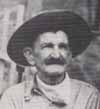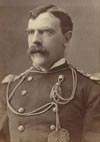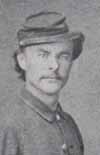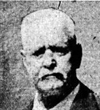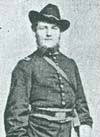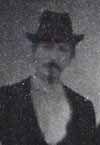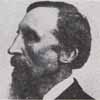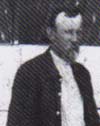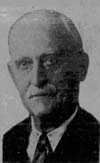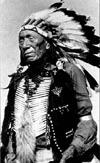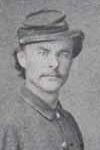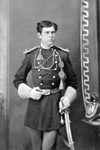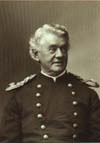
Frederick William Benteen (left) was born on August 24, 1834, in Petersburg, Virginia, the son of Theodore Charles and Caroline Hargrove Benteen. He was the Captain of Company H, commanding a battalion, on scouting duty and in the hilltop fight, during which he was wounded.
James Flanagan was born in Innis, County Clare, Ireland, on August 24, 1839. He was a Sergeant in Company D who participated in the hilltop fight.

James Calhoun (left) was born on August 24, 1845, in Cincinnati, Ohio, and married Maggie Custer on March 7, 1872. He was the First Lieutenant of Company C but commanded Company L during the battle. He was killed along with three brothers-in-law (George Custer, Tom Custer, and Boston Custer) and their nephew, Autie Reed.

Luther Rector Hare (right) was born in Noblesville, Indiana, on August 24, 1851, the son of Silas and Octavia Elizabeth Rector Hare. He was an 1874 graduate of the United States Military Academy at West Point and served as the Second Lieutenant of Company K during the battle. He participated in both the valley and hilltop fights.
William August Marshall died on August 24, 1892, in Washington, D.C., and was buried in the Green Lawn Cemetery in Columbus, Ohio. He was a Private in Company D who participated in the hilltop fight.

John Ryan (left) was born in Newton, Massachusetts, on August 25, 1845. He was the First Sergeant for Company M who participated in both the valley and hilltop fights during the battle.
James C. Blair died on August 25, 1918, in Pittsburgh, Pennsylvania, and was buried in the Union Dale Cemetery there. He was a Private in Company K who was not present at the battle due to detached service.
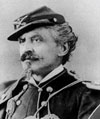
Charles Camillus DeRudio (right) was born in Belluno Venetia, Austria, on August 26, 1832. He was the First Lieutenant for Company E who participated in both the valley and hilltop fights.
Marion E. Horn was born on August 26, 1853, in Richmond, Indiana. He was a Private in Company I who was killed with Custer’s Column.
James Weeks died on Crow Agency, Montana, on August 26, 1877. He was a Private in Company M who participated in both the valley and hilltop fights.
Robert Jackson was born on August 27, 1856, at Fort Benton, Montana Territory. He was a Scout who was not present at the battle due to detached service.
John E. Armstrong married Martha Hancock on August 27, 1856. He was a Private in Company A who was killed in the valley fight.
John S. Wells died on August 27, 1893, in Bismarck, North Dakota, and was buried in the Fairview Cemetery in Bismarck. He was a Sergeant in Company E who was not present at the battle due to detached service.
Walter Scott Sterland died on August 27, 1922, in Bismarck, Burleigh County, North Dakota, and was buried in the Dickinson Cemetery in Dickinson, Stark County, North Dakota. He was a Private in Company M who was not present at the battle due to detached service at Yellowstone Depot.
Darwin E. Symms was born in Montreal, Quebec, Canada, on August 28, 1851, the son of Richard and Adaliza A. Symms. He was a Private in Company I who was killed with Custer’s Column.
Bad Heart Bull, who was among the first Oglala to fight Reno’s men on their approach to the village, died on August 28, 1913.
John McGlone died on August 28, 1920, in the Barnes Hospital in Washington, D.C., and was buried in the Soldiers’ Home National Cemetery there. He was a Sergeant with Company M who participated in the valley and hilltop fights.
John Mullen died in San Francisco, California, on August 29, 1888, and was buried in the San Francisco National Cemetery at the Presidio. He was a Sergeant with Company L who was with the pack train and participated in the hilltop fight.
Charles Sanders died on August 29, 1915, in Lincoln, Nebraska. He was a Private in Company D who served as an orderly for Lt. Edgerly during the battle and participated in the hilltop fight.
